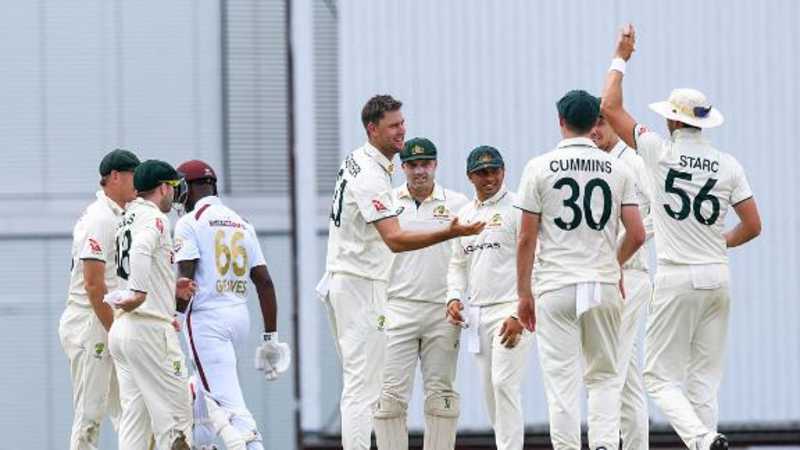
Five DRS Blunders That Left West Indies Fuming Against Australia
What a wild and frustrating Test it’s been for the West Indies in Barbados. If you’ve been following the first Test against Australia, then you already know the buzz—it wasn’t just about the cricket, but the absolute DRS (Decision Review System) chaos that dominated the headlines. You’d think that with all the technology in modern cricket, we’d get more clarity, but instead, we saw five major moments that left the West Indies team and fans absolutely stunned.
It all began on day one when Shamar Joseph, bowling his heart out, had Travis Head caught behind—or so we thought. Shai Hope took what looked like a clean catch, but third umpire Adrian Holdstock said there was no conclusive evidence. Replays seemed to show the ball touching leather before the grass, but somehow, Head survived. That decision set the tone for what became a series of head-scratching calls.
Also Read:- Supreme Court Ruling on LGBTQ Books in Schools Sparks Fierce National Debate
- Gracie Abrams Lights Up Glastonbury 2025 – But Leaves Room to Grow
Day two brought more frustration. In the very first over, Josh Hazlewood thought he had Roston Chase plumb LBW. Replays even showed the ball brushing pad before the bat, but again, the third umpire stuck with the on-field call of not out. Minutes later, Chase was given out LBW despite a very visible inside edge. Replays clearly showed the ball deviating off his bat onto the pad, yet the decision stood. Even commentators, trying their best to stay neutral, couldn’t hide their disbelief.
Then came the dismissal of Shai Hope. He was caught brilliantly by Alex Carey off an inside edge. But when replays zoomed in, it was clear the ball had grazed the ground as Carey landed. Still, it was ruled out. That one really lit up the commentary box—Carlos Brathwaite didn’t hold back, calling the inconsistency "unbelievable."
And just when you thought the West Indies’ luck couldn’t get any worse, Cameron Green received a reprieve that mirrored Chase’s earlier dismissal. Green looked dead in front, but third umpire Holdstock once again gave the benefit of the doubt to Australia. Brathwaite summed it up best: “You can’t tell me Roston Chase is out and this is not. Where’s the consistency?”
It wasn’t just fans feeling robbed. Even respected voices like Ian Bishop called for calm but acknowledged the need for better interpretation of technology. Mitch Starc, from the Australian camp, said it simply: “We can only ask the question.” But that’s the thing—West Indies kept asking, and they kept getting silence or the wrong answer.
In the end, this wasn’t just about five decisions—it was about the integrity of the game. For the West Indies, fighting for a rare home win against Australia, these moments weren’t just errors; they were momentum killers. Let's hope the ICC takes a hard look at these calls, because this Test showed that even with the best tech, bad calls can still change a match—and a mood—completely.
Read More:

0 Comments